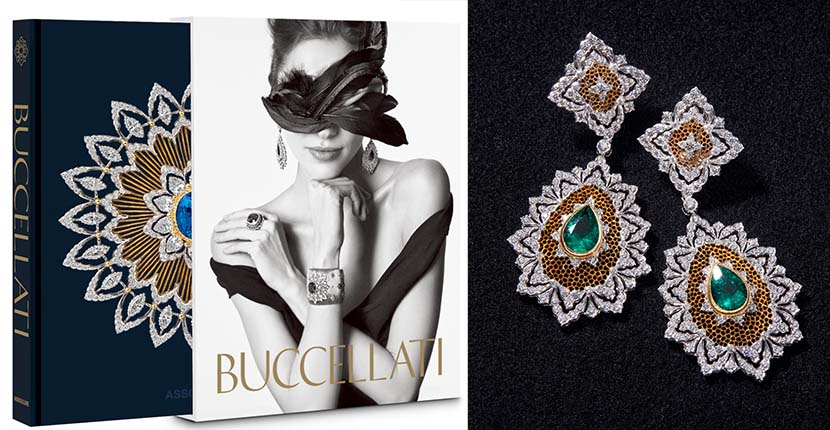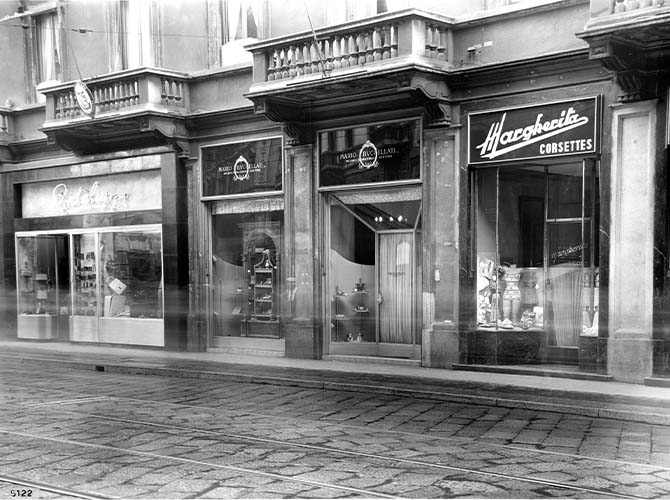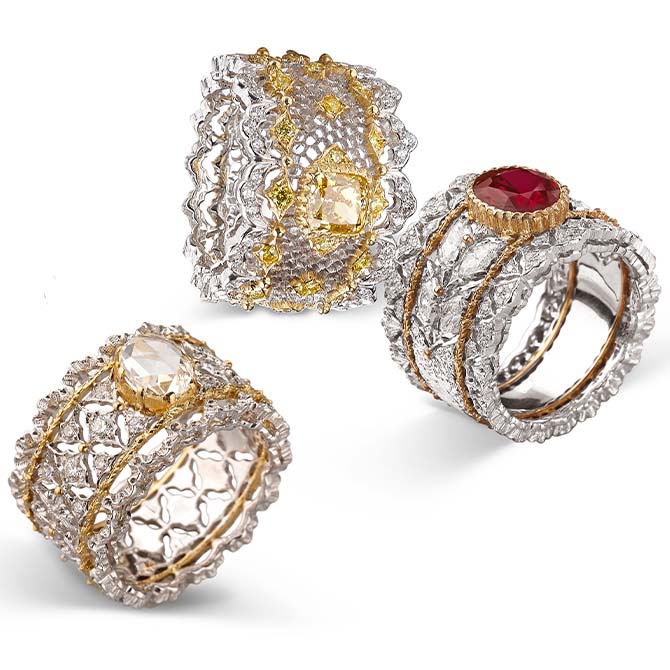
Buccellati: A Century of Timeless Beauty (Assouline) and Honeycomb pendant earrings of white and yellow gold set with emerald and diamonds, 2017. Photo Assouline and © Aplomb Photo Studio
Books & Exhibitions
Buccellati’s Singular Style Lights Up A New Book
The Assouline publication reveals the backstory of the famous goldsmith
January 12, 2022—In a world where most brands race to keep up with the whims of every new generation, Buccellati stands out. For just over 100 years the Italian firm has continuously worked in the goldsmithing techniques developed in Milan by founder Mario Buccellati. The immediately recognizable look includes hand engraving and chiseling of gold, platinum or silver into honeycomb and openwork patterns. Usually there are two colors of metal in one jewel. The style, which has proven to be timeless, often sparkles with diamonds. Special pieces are punctuated with colorful gems.
In a new Assouline book, Buccellati: A Century of Timeless Beauty a trio of jewelry scholars tell the story of Buccellati’s dedication to their craft and techniques. The authors are Alba Cappellieri, a professor at Milan Polytechnic, Franco Cologni, President of Fondazione Cologni dei Mestieri d’Arte and jewelry journalist Vivienne Becker.

The Buccellati style was launched in Milan in 1919. Just as the rest of the Western world was turning to an Art Deco mode to cleanse the palette of royal motifs that dominated designs for so long, Mario Buccellati took a more romantic route and found inspiration in Renaissance work. His legacy is not that of the modern age instead he was more closely aligned with the great Florentine goldsmith Benvenuto Cellini.
Descendants of craftsmen from Mario Buccellati’s original team still work on the designs at the firm creating a thread line down the decades. What changes with each generation is the gently evolving silhouettes of the designs and objects that family members guide their craftsmen to create.

In the 1960s, Vivienne Becker explains, Gianmaria Buccellati infused the jewelry with colorful gems and strived to make objects as beautiful as those found in the Medici collection in Florence. Gianmaria’s son Andrea’s style was “more geometric and graphic, more crisply linear than that of his father and his hand-drawn designs are even more precise and minutely detailed.” Andrea’s daughter, Lucrezia defines her goal as “Creating simplicity from the complexity of Buccellati techniques.”

The truth is the changes over four generations of the family are all quite subtle. Overall, the Buccellati style is one very cohesive whole. A thumbing through the pages of this book shows the mastery in goldsmithing. A laundry list of engraving techniques detailed in the publication—Rigato, Telato, Segrinato, Ornato, Modellato—is the language Buccellati speaks fluently and consistently through the ages and it’s all very beautiful.

Related Stories:
A New Look At Old Lover’s Eyes
The Jewels In Kate Middleton’s Birthday Photos
Get a gem in your mailbox SIGN UP FOR THE ADVENTURINE NEWSLETTER




